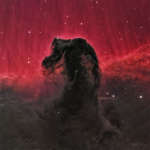
|
Astronomy Picture Of the Day (APOD)
 APOD: 2024 December 4 Б Driveway Analemma
APOD: 2024 December 4 Б Driveway Analemma
3.12.2024
Does the Sun return to the same spot on the sky every day?б No.б A more visual answer is an analemma, a composite of sky images taken at the same time and from the same place over a year.
 APOD: 2024 December 3 Б Ice Clouds over a Red Planet
APOD: 2024 December 3 Б Ice Clouds over a Red Planet
2.12.2024
If you could stand on Mars -- what might you see? You might look out over a vast orange landscape covered with rocks under a dusty orange sky, with a blue-tinted Sun setting over the horizon, and odd-shaped water clouds hovering high overhead.
 APOD: 2024 December 2 Б NGC 300: A Galaxy of Stars
APOD: 2024 December 2 Б NGC 300: A Galaxy of Stars
1.12.2024
This galaxy is unusual for how many stars it seems that you can see. Stars are so abundantly evident in this deep exposure of the spiral galaxy NGC 300 because so many of these stars are bright blue and grouped into resolvable bright star clusters.
 APOD: 2024 December 1 Б Cosmic Latte: The Average Color of the Universe
APOD: 2024 December 1 Б Cosmic Latte: The Average Color of the Universe
30.11.2024
What color is the universe? More precisely, if the entire sky were smeared out, what color would the final mix be? This whimsical question came up when trying to determine what stars are commonplace in nearby galaxies. The answer, depicted here, is a conditionally perceived shade of beige. In computer parlance: #FFF8E7.
 Winter and Summer on a Little Planet
Winter and Summer on a Little Planet
29.11.2024
Winter and summer appear to come on a single night to this stunning little planet. It's planet Earth of course. The digitally mapped, nadir centered panorama covers 360x180 degrees and is composed of frames recorded during January and July from the Col du Galibier in the French Alps.
 Messier 4
Messier 4
28.11.2024
Messier 4 can be found west of bright red-giant star Antares, alpha star of the constellation Scorpius. M4 itself is only just visible from dark sky locations, even though the globular cluster of 100,000 stars or so is a mere 5,500 light-years away.
 NGC 206 and the Star Clouds of Andromeda
NGC 206 and the Star Clouds of Andromeda
27.11.2024
The large stellar association cataloged as NGC 206 is nestled within the dusty arms of the neighboring Andromeda galaxy along with the galaxy's pinkish star-forming regions. Also known as M31, the spiral galaxy is a mere 2.5 million light-years away.
 APOD: 2024 November 27 Б The Meteor and the Comet
APOD: 2024 November 27 Б The Meteor and the Comet
26.11.2024
How different are these two streaks? The streak on the upper right is Comet Tsuchinshan-Atlas showing an impressive dust tail. The comet is a large and dirty iceberg that entered the inner Solar System and is shedding gas and dust as it is warmed by the Sun's light.
 APOD: 2024 November 26 Б The Sombrero Galaxy from Webb and Hubble
APOD: 2024 November 26 Б The Sombrero Galaxy from Webb and Hubble
25.11.2024
This floating ring is the size of a galaxy. In fact, it is a galaxy -- or at least part of one: the photogenic Sombrero Galaxy is one of the largest galaxies in the nearby Virgo Cluster of Galaxies.
 APOD: 2024 November 25 Б The Horsehead Nebula
APOD: 2024 November 25 Б The Horsehead Nebula
24.11.2024
One of the most identifiable nebulas in the sky, the Horsehead Nebula in Orion, is part of a large, dark, molecular cloud. Also known as Barnard 33, the unusual shape was first discovered on a photographic plate in the late 1800s.
|
January February March April May June July August September October November December |
||||||||||||||||||||||||||||||||||||||||||||||||||||||||